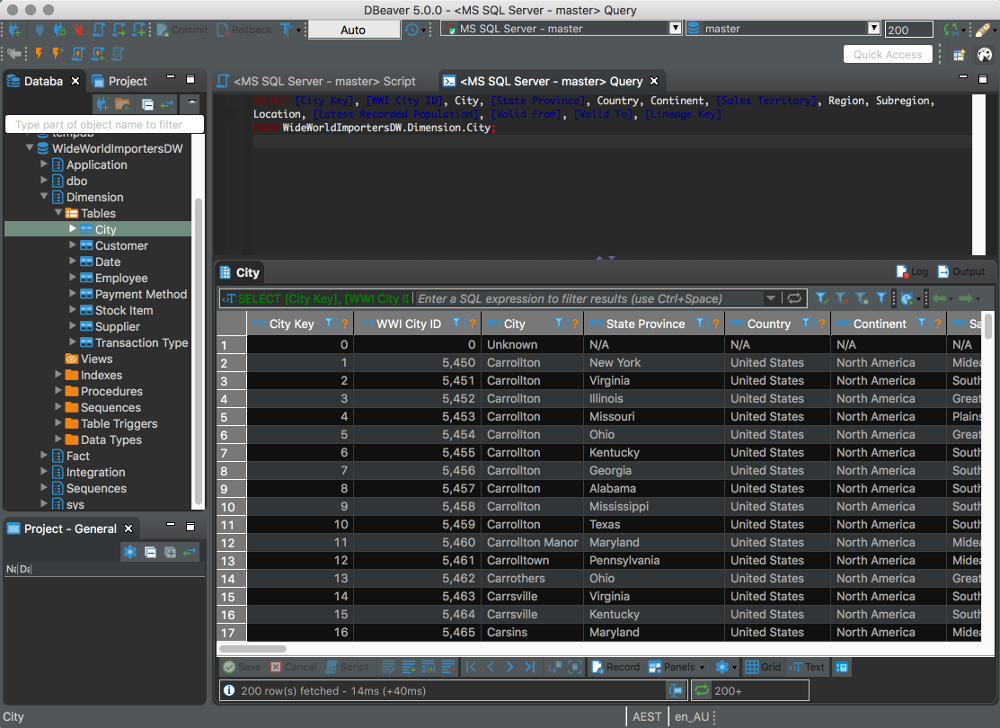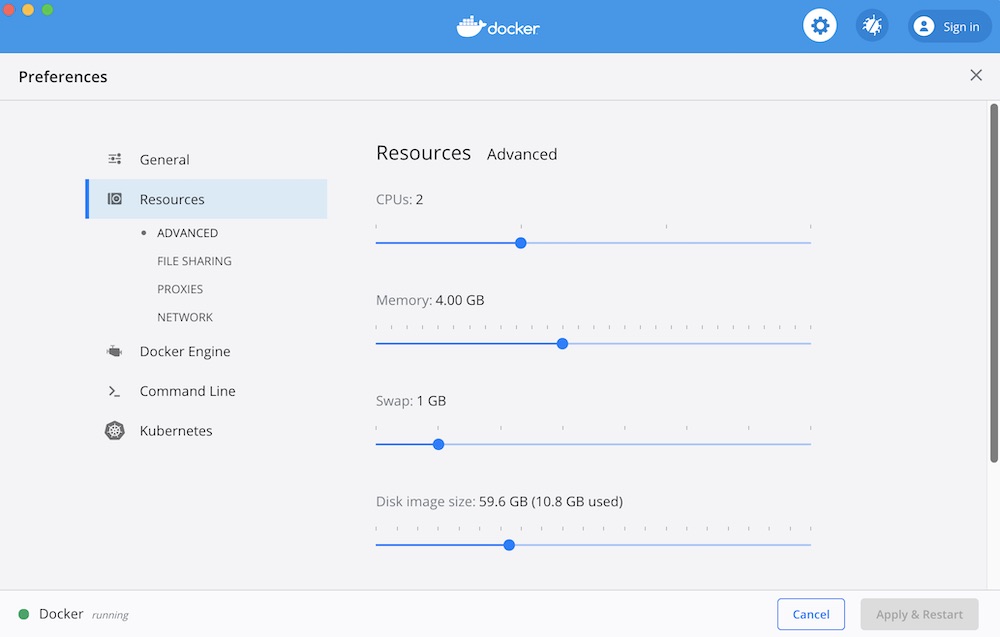Microsoft Sql Server for Mac Download UPDATED Free
Microsoft Sql Server for Mac Download
Here I'll show you lot how to get SQL Server upwardly and running on your Mac in less than half an hr. And the best part is, you lot'll have SQL Server running locally without needing whatsoever virtualization software.
Prior to SQL Server 2017, if you wanted to run SQL Server on your Mac, you first had to create a virtual machine (using VirtualBox, Parallels Desktop, VMware Fusion, or Bootcamp), and so install Windows onto that VM, and so finally SQL Server. This is still a valid choice depending on your requirements (here's how to install SQL Server on a Mac with VirtualBox if you'd like to effort that method).
Starting with SQL Server 2017, y'all can now install SQL Server direct on to a Linux machine. And because macOS is Unix based (and Linux is Unix based), you can run SQL Server for Linux on your Mac. The style to do this is to run SQL Server on Docker.
And so let'due south get ahead and install Docker. Then we'll download and install SQL Server.
But first… if you're using a Mac with the M1 scrap, run into How to Install SQL Server on an M1 Mac (ARM64).
-
Install Docker
Download the (free) Docker Community Edition for Mac (unless you've already got it installed on your arrangement). This will enable y'all to run SQL Server from within a Docker container.
To download, visit the Docker CE for Mac download folio and click Get Docker.
To install, double-click on the .dmg file and so drag the Docker.app icon to your Awarding binder.

Docker installation on a Mac. -
Launch Docker
Launch Docker the aforementioned way yous'd launch whatever other application (eg, via the Applications binder, the Launchpad, etc).
When you open Docker, you lot might be prompted for your password so that Docker can install its networking components and links to the Docker apps. Go ahead and provide your countersign, as Docker needs this to run.

The password request dialog -
Increase the Retentiveness (optional)
By default, Docker may have 2GB of retentivity allocated to information technology. SQL Server needs at least 2GB. Yet, it won't hurt to increase it if you can.
In my case, I increased information technology to 4GB.
To do this, select Preferences from the picayune Docker icon in the top menu:

So on the Resources > Advanced screen, slide the memory slider up to at least 4GB:
Then finish off by clicking Utilize & Restart
-
Download SQL Server
Now that Docker is installed, we can download and install SQL Server for Linux.
Open up a Terminal window and run the post-obit command.
sudo docker pull mcr.microsoft.com/mssql/server:2019-latest
This downloads the latest SQL Server 2019 for Linux Docker image to your computer.
You can also check for the latest container version on the Docker website if you wish.
-
Launch the Docker Image
Run the following command to launch an instance of the Docker prototype you merely downloaded:
docker run -d --proper name sql_server_demo -e 'ACCEPT_EULA=Y' -due east 'SA_PASSWORD=reallyStrongPwd123' -p 1433:1433 mcr.microsoft.com/mssql/server:2019-latest
But of course, employ your own proper noun and countersign. Also, if you downloaded a different Docker image, supercede
mcr.microsoft.com/mssql/server:2019-latestwith the one you lot downloaded.Here's an explanation of the parameters:
-dThis optional parameter launches the Docker container in daemon way. This ways that it runs in the background and doesn't need its own Final window open. You can omit this parameter to have the container run in its own Final window. --name sql_server_demoAnother optional parameter. This parameter allows you to name the container. This can be handy when stopping and starting your container from the Last. -east 'ACCEPT_EULA=Y'The Yshows that you agree with the EULA (End User Licence Agreement). This is required in order to have SQL Server for Linux run on your Mac.-e 'SA_PASSWORD=reallyStrongPwd123'Required parameter that sets the sadatabase password.-p 1433:1433This maps the local port 1433 to port 1433 on the container. This is the default TCP port that SQL Server uses to listen for connections. mcr.microsoft.com/mssql/server:2019-latestThis tells Docker which image to use. If you lot downloaded a different one, use it instead. -
Check the Docker container (optional)
You can blazon the post-obit command to check that the Docker container is running.
docker ps
If it'southward upwards and running, information technology should return something similar this:
CONTAINER ID Image Command CREATED STATUS PORTS NAMES 4e4aa21eb391 mcr.microsoft.com/mssql/server:2019-latest "/opt/mssql/bin/sqls…" 23 seconds ago Up 21 seconds 0.0.0.0:1433->1433/tcp sql_server_demo
-
Install sql-cli (unless already installed)
Run the following command to install the sql-cli command line tool. This tool allows you to run queries and other commands confronting your SQL Server example.
npm install -g sql-cli
This assumes you have NodeJs installed. If you don't, download it from Nodejs.org first. Installing NodeJs will automatically install npm which is what we use in this command to install sql-cli.
-
Connect to SQL Server
Now that sql-cli is installed, we can get-go working with SQL Server via the Last window on our Mac.
Connect to SQL Server using the
mssqlcommand, followed past the username and password parameters.mssql -u sa -p reallyStrongPwd123
You should come across something like this:
Connecting to localhost...done sql-cli version 0.6.0 Enter ".help" for usage hints. mssql>
This means you've successfully connected to your instance of SQL Server.
-
Run a Quick Examination
Run a quick test to check that SQL Server is up and running and yous tin query it.
For example, you can run the post-obit control to run across which version of SQL Server your running:
select @@version
If it'due south running, you should run across something like this (but of grade, this will depend on which version you're running):
+--------------------+ | (No column proper name) | |--------------------| | Microsoft SQL Server 2019 (RTM-CU3) (KB4538853) - 15.0.4023.6 (X64) Mar iv 2020 00:59:26 Copyright (C) 2019 Microsoft Corporation Developer Edition (64-fleck) on Linux (Ubuntu eighteen.04.4 LTS) | +--------------------+ (1 row affected)
If you encounter a bulletin like this, congratulations — SQL Server is now upward and running on your Mac!
Yous tin can at present go ahead and run SQL queries against SQL Server.
See my free SQL Tutorial for Beginners to become started with writing elementary queries against SQL Server.
A SQL Server GUI for your Mac – Azure Data Studio

Azure Data Studio (formerly SQL Operations Studio) is a costless GUI direction tool that y'all tin use to manage SQL Server on your Mac. You lot can employ it to create and manage databases, write queries, backup and restore databases, and more than.
Azure Information Studio is available on Windows, Mac and Linux.
Here are some articles/tutorials I've written for Azure Data Studio:
- What is Azure Data Studio
- How to install Azure Data Studio on your Mac
- How to Create a Database with Azure Data Studio
- How to Restore a Database with Azure Data Studio on a Mac
Another Gratuitous SQL Server GUI – DBeaver
Some other SQL Server GUI tool that yous tin use on your Mac (and Windows/Linux/Solaris) is DBeaver.
DBeaver is a complimentary, open source database management tool that tin can be used on most database management systems (such as MySQL, PostgreSQL, MariaDB, SQLite, Oracle, DB2, SQL Server, Sybase, Microsoft Access, Teradata, Firebird, Derby, and more).

I wrote a piddling introduction to DBeaver, or y'all can become straight to the DBeaver download folio and try it out with your new SQL Server installation.
Limitations of SQL Server for Linux/Mac
SQL Server for Linux does take some limitations when compared to the Windows editions (although this could alter over fourth dimension). The Linux release doesn't include many of the extra services that are bachelor in the Windows release, such equally Assay Services, Reporting Services, etc. Here'south a list of what's available and what's non on SQL Server 2017 for Linux and here's Microsoft'due south list of Editions and supported features of SQL Server 2019 on Linux.
Another limitation is that SQL Server Management Studio is non available on Mac or Linux. SSMS a full-blown GUI management for SQL Server, and information technology provides many more features than Azure Data Studio and DBeaver (at least at the time of writing). You can yet use SSMS on a Windows auto to connect to SQL Server on a Linux or Mac machine, merely you lot just can't install information technology locally on the Linux or Mac automobile.
If you demand any of the features not supported in SQL Server for Linux, you'll need SQL Server for Windows. Nonetheless, y'all can still run SQL Server for Windows on your Mac past using virtualization software. Here's how to install SQL Server for Windows on a Mac using VirtualBox.
Microsoft Sql Server for Mac Download UPDATED Free
Posted by: joycecakinionder.blogspot.com

Comments
Post a Comment